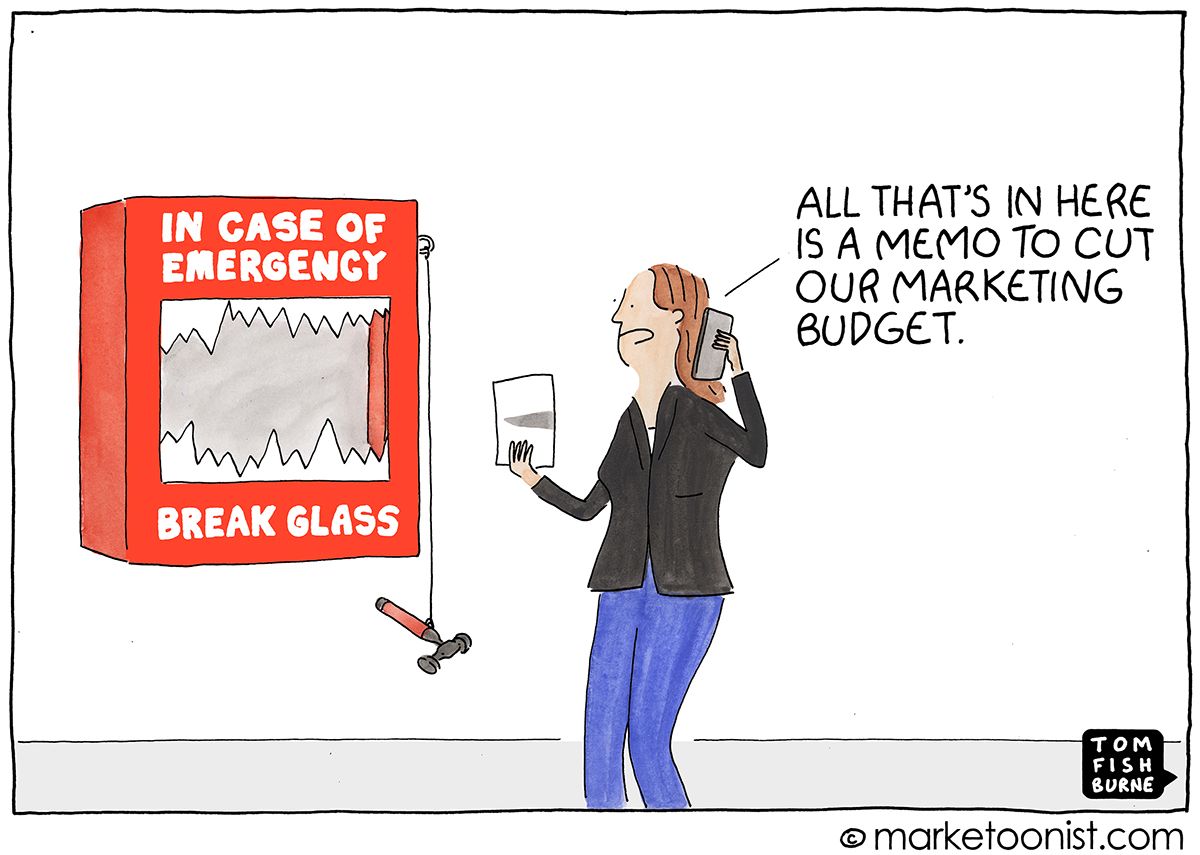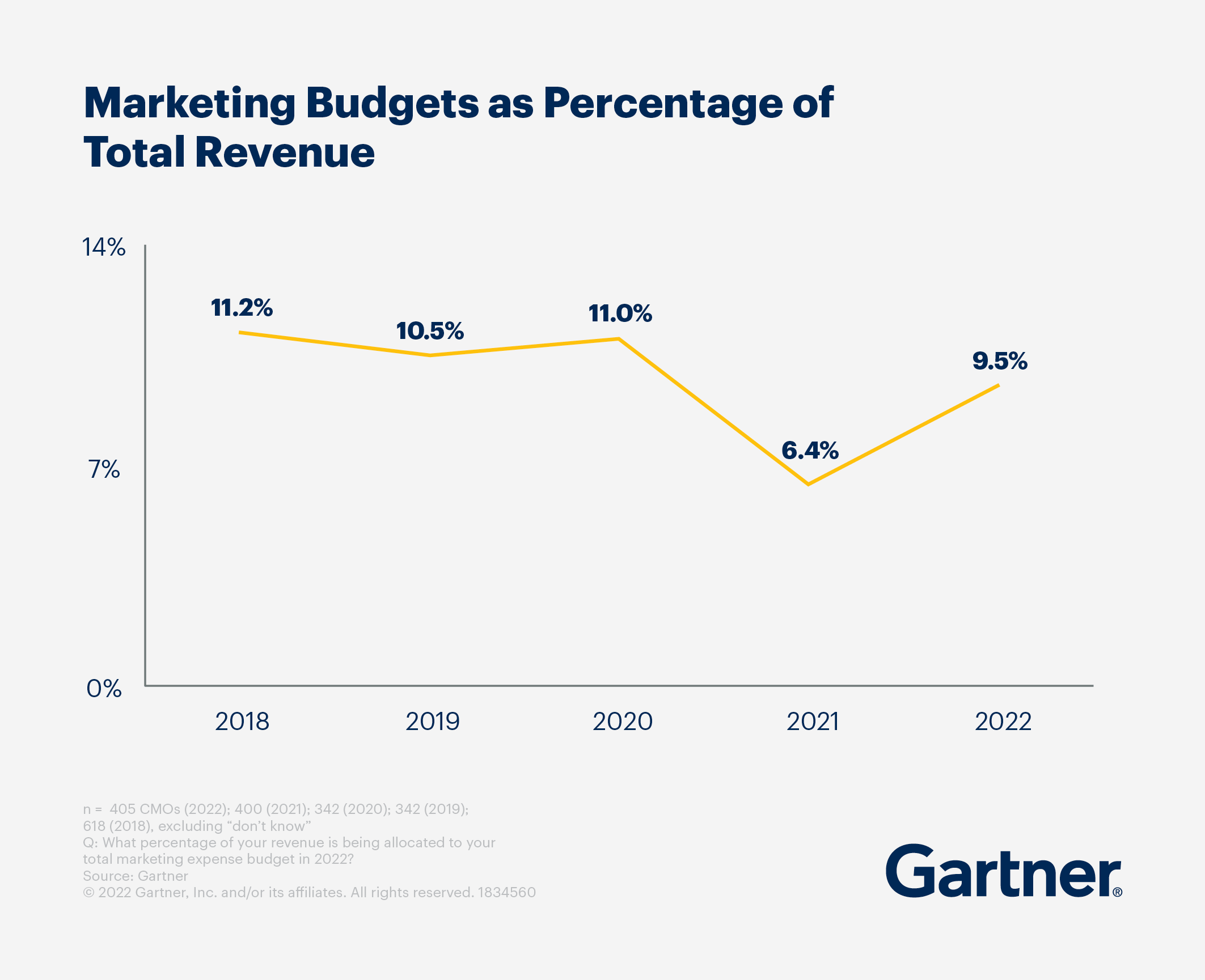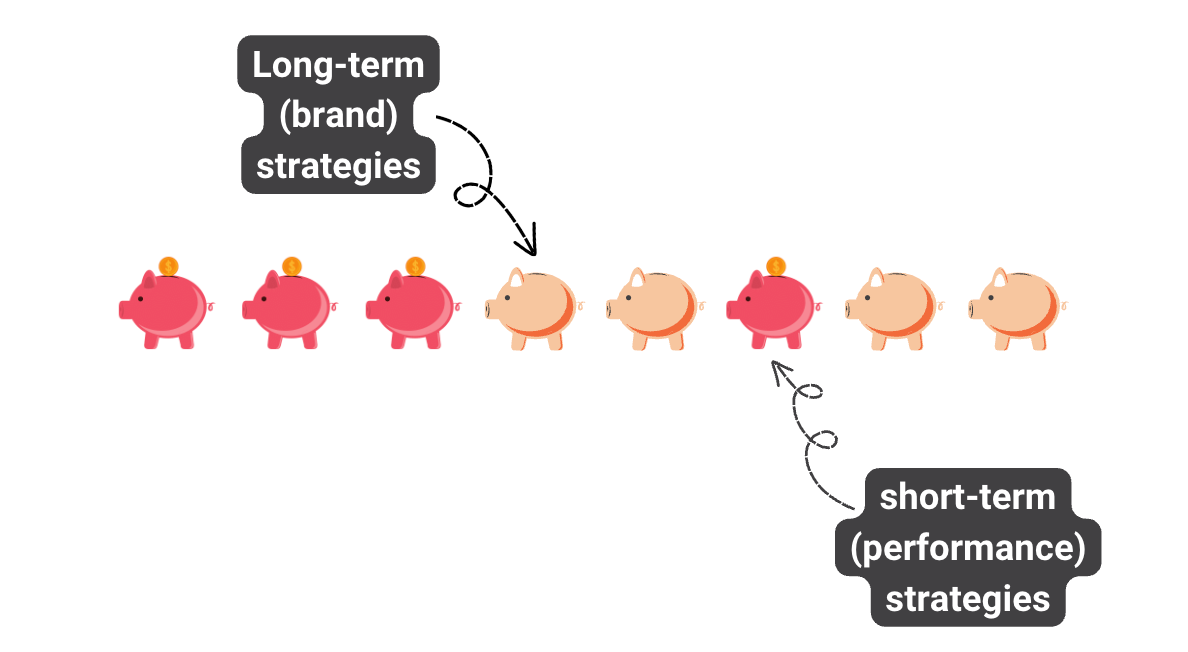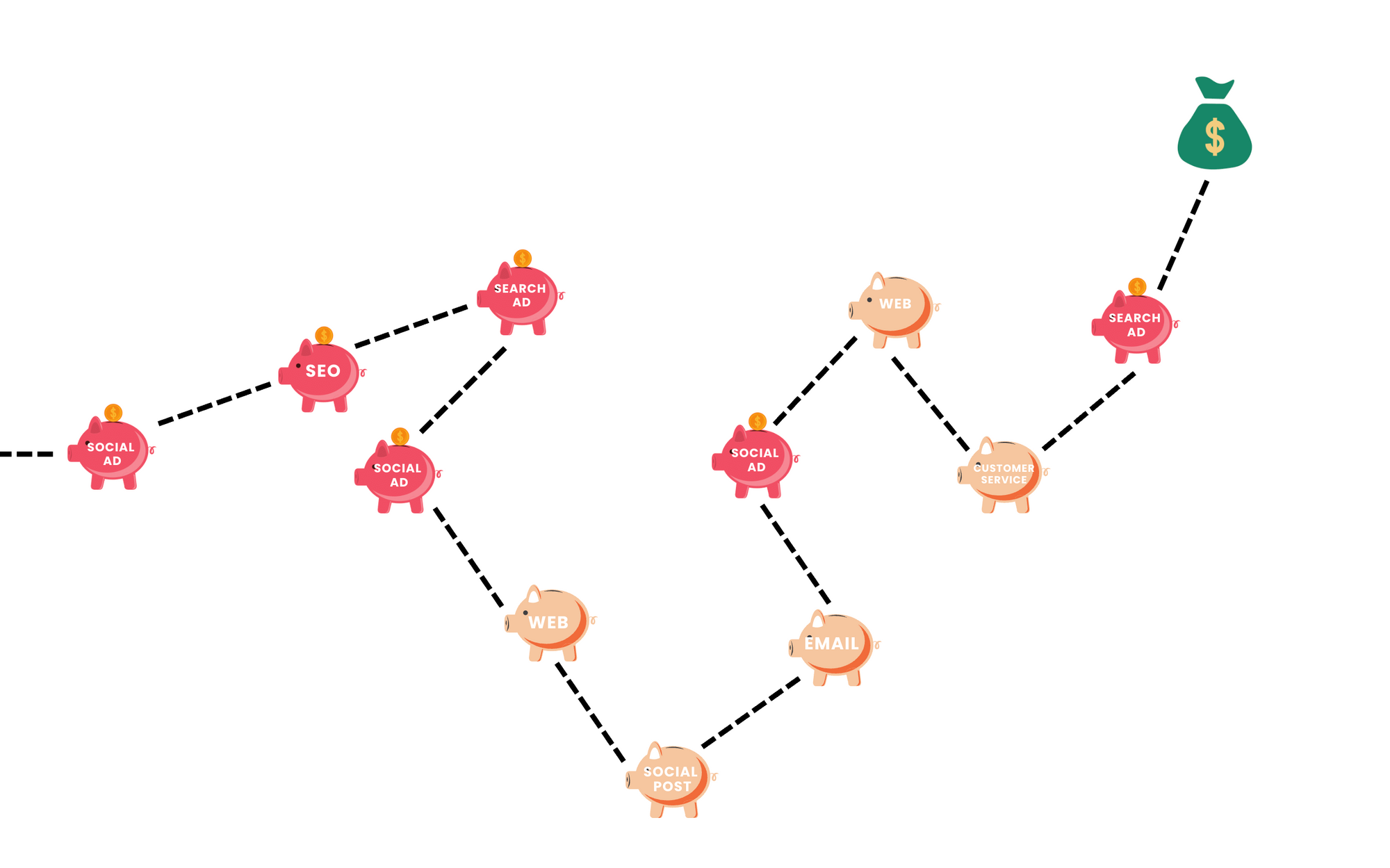#0015: ⚖️The 8-step process to setting a balanced budget!⚖️

Hi! Welcome to CVB Weekly #0015, where founders and marketers find the tools to turn marketing into a growth powerhouse.
Let’s talk about creating and measuring your marketing budget, shall we? We’ve got 8 easy steps to help you streamline your investment and grow your business. And even if you’re not an online business, you’ll still find value in the case studies we’ll be sharing.
You'll explore:
- Setting revenue targets
- Identifying target customers
- Balancing long & short strategies
- Uncovering marketing levers
- Establishing goals
- Defining key metrics
- Crafting the budget
- Measuring & reporting
Budgets are more important than ever. Enjoy Tom Fishburne's Marketoonist cartoon, then tackle budgeting to boost your business.

Challenges? Uncertainty, lack of support, approval troubles, short-sightedness, and fear. Yet, nine-figure businesses thrive by focusing on clear budgets and data. Embrace the 8 steps and unlock your potential!

☕If you want the TL;DR version☕ Simply set a budget that is 10% of targeted revenue and away you go. Remember that this budget will include;
- Advertising
- Technology
- Outsourced freelancers or agencies

As you set your targets, ensure they're attainable to give yourself a reason to celebrate your victories. 🥂 However, go beyond by establishing "stretch" goals that inspire innovation and bold thinking. Pursue your "Big Hairy Audacious Goal" (BHAG) as your ultimate aspiration, but remain open to new opportunities that may arise. For those eager to delve deeper, follow the 8 steps below and adopt the budgeting and measurement techniques of top-performing nine-figure businesses.
Let's rise together! 🚀
A comprehensive worksheet awaits you below, complete with tips and advice to guide you on your journey. Don't let the pursuit of perfection hold you back!

Step 1: Set your revenue target for the next 12 months.
Determining your budget is straightforward: base it on a percentage of your targeted revenue. This approach is ideal for first-time budgeting or when cutting marketing expenses. Engage your CEO, founder, and finance team in establishing business goals and deadlines. If targets appear aggressive, research industry growth trends through networking or tools like IBIS world data.
Consider setting three levels {using the case study above}:
- Target: The attainable goal - 5.96%
- Stretch: A challenging but feasible target - 9%
- BHAG: The Big Hairy Audacious Goal, aiming high - 15%
Step 2: Identify the ideal customer profile {ICP} that will grow your business.
Optimise your business by using customer segmentation and defining your ideal customer profile. This process identifies key customer segments for growth, directing your marketing and storytelling efforts for maximum efforts. Analyse each segment's behaviour and preferences, as their value and profit potential may vary. Streamlining your ideal customer profile enhances resource allocation {time, money and effort}, promoting focused action and optimising people and budget for greater results.
Identify your ideal customer by considering those who understand your value and advocate for your brand. Consult your sales or customer service team for insights. Investigate how these customers discovered your business, their preferences, and seek to attract similar customers. A great customer is an easy customer!
Step 3: Understand and optimise for the long and short of it
Unlock success by finding the sweet spot between long-term {brand} strategies and short-term {performance} strategies. This magic balance sets you up for lasting growth! Take a look at your marketing activities and sort them into two buckets: long-term and short-term. Aim for a 50/50 mix to help your business blossom! 🌺
Long-term {brand} strategies
- Organic social media storytelling
- Press and magazines
- Master brand storytelling videos
- Public relations
- Email marketing {if brand focused}
Short-term {performance} strategies
- Paid social media advertising {Facebook & Instagram}
- Paid search advertising {PPC}
- Organic search {SEO}
- Email marketing {if sales focused}

Remember, the key difference between long-term (brand-loving) and short-term (fast-results) strategies is the time it takes to see the payoff. If you're on a tight budget, put your energy into those long-term tactics. They might need a bit more work, but they'll bring in sales over time. Slow and steady wins the race! 🐢
Step 4: Understand your marketing levers - people & tech!
Don't forget that technology costs should be incorporated into your marketing budget, as they can significantly enhance your team's performance. But, it's crucial to strike a balance and avoid overspending. Use your budget as a guideline and explore various technology options that align with your business's needs and goals. Below are some tech tools you might find useful.
- Content creation tools {eg: CANVA}
- Social media posting software {eg: SKED}
- Marketing email and automation tools {eg: Klaviyo}
- data reporting and analytics software {eg: Shield Analytics if you post on LinkedIn a lot}
- Team project management cost {eg: monday.com}
Tech is meant to make our lives easier, right? If it’s not doing that for you, it might be the wrong fit, or you might just need a helping hand. Don’t be shy about asking for help – make that tech work for you! And remember, there’s plenty of affordable tech out there. Don’t get sucked into pricier options just because they sound simple. Baby steps!
Step 5: Understand the challenges of calculating ROI
Don't be scared by marketing campaign performance reporting! The trick is to dig into your data and unearth those hidden gems that can drive outstanding results.
Did you know that up to 11 touch-points can influence a final sale?
That's why it's vital to recognise their contributions. META {Facebook and Instagram marketing} will try to convince you that their platform-generated ad resulted in the sale, and so will Google (SEO & PPC).
But don't worry, the truth lies somewhere in the middle! Each ad contributes to the sale just as much as your organic social media, customer service, and in-parcel experience.
To get a complete view of all your channels, use Google Analytics and test out what works best.
When you are ready {and your budget allows}, team up with a top PPC agency who can help achieve a 4:1 ROAS {that is $4 for every $1 you spend}. Keep an eye on your data and review your channel's performance every quarter for maximum impact!

Dealing with data can feel like a doozy, but trust me – it’s a goldmine most of your competitors probably aren’t tapping into. So, why not get a leg up and start simple? Track users to your website in Google Analytics! Thats the perfect place to start.
You’ve got this!
Step 6: How to set marketing goals
Want to create awesome marketing goals? Just follow these easy steps:
- Make sure your goals match up with your company's big plans. This is your targeted revenue I covered in step 1.
- Keep 'em SMART - Specific, Measurable, Achievable, Relevant, and Time-bound.
- Figure out how you'll know if you're making progress (hello, key results!).
- Set benchmarks so you know what success looks like. This can be based on what you achieved in the previous year.
- Give each goal to someone or a team to make it happen.
- Keep an eye on how things are going and tweak as needed.
- Don't forget to check in on your goals and update them when things change.
Here are a few examples of marketing goals you might consider as well as the metrics to track and measure success.
- Increase Brand Awareness:
- Goal: Make your brand more recognisable and visible to your target audience.
- Metrics: Website traffic growth, increase in social media followers, and higher engagement rates across platforms (likes, shares, comments). You can check your engagement levels using tools like Phlanx.
2. Generate Leads:
- Goal: Identify and attract potential customers interested in your products or services.
- Metrics: Growth in email list subscribers, increase in contact form submissions, and improved conversion rate for lead magnets (e.g., downloads, webinar registrations).
3. Drive Sales and Revenue Growth:
- Goal: Increase the number of purchases or transactions made by customers, boosting revenue.
- Metrics: Improved online store conversion rates, increased average order value (AOV), and expanded customer lifetime value (CLV).
4. Improve Customer Retention and Loyalty:
- Goal: Keep existing customers engaged and satisfied with your products or services.
- Metrics: Reduced churn rate (the percentage of customers who stop doing business with you), increased repeat purchase rate, and higher customer satisfaction scores (e.g., Net Promoter Score or customer satisfaction surveys).
5. Expand Market Share:
- Goal: Grow your number of customers against your total addressible market {TAM}.
- Metrics: Number of customers.
These examples provide a starting point for establishing your marketing goals. Keep in mind that the specific goals and key results will vary based on your company's unique needs, industry, and target audience.
And don’t sweat it – lots of businesses, big and small, have a tough time with this part. Just keep it simple and don’t skip it, because it’s super important for getting your team and budget on track. Plus, it’ll help you see the results of all your hard work.
Step 7. Create a marketing budget
With your targeted revenue identified, setting the budget becomes easier. Consider the 70-20-10 rule for allocation:
- 70% for proven strategies
- 20% for new growth strategies
- 10% for experimental tactics
Split the budget evenly between brand and performance strategies. Consult with your CFO to maintain budget flexibility, allowing for adjustments as needed. Set a budget and take action without letting perfectionism hinder progress.
Step 8. Measure and report on the impact
Communicating marketing value to stakeholders is essential:
- Identify your key stakeholders
- Determine their view of successful marketing
- Collaborate on measures and metrics for success
- Choose a reporting format and frequency {I use excel and report monthly as the report doesn't need to look good to be valuable}
Sure, reporting on impact can be scary – we all mess up sometimes. But remember, marketing is all about learning from those fails and turning them into wins! Don’t skip this step because you’re afraid to fail. Find out what’s working and run with it. Before you know it, you’ll be doing more of the good stuff and leaving the not-so-good stuff behind.
Takeaway
In this edition of the newsletter, I've guided you through the 8 essential steps to create a marketing budget that sets you up for success. With an emphasis on being measurable, these steps will help you focus your team, allocate resources effectively, and evaluate the impact of your efforts.
Embrace the power of data, learn from failure, and start simple.
Remember that marketing is an iterative process, and each step brings you closer to achieving your goals. Stay committed, be bold, and keep doing what works. The journey towards marketing success starts today, and you have the tools and knowledge to make it happen.
Let's do this!

- Subscribe to the weekly CVB newsletter for founders and marketers looking to transform their marketing into the engine for customer-led growth and innovation.
- Access the micro lesson - Storytelling with listening where I will teach you the steps to building listening into your content and storytelling using data in a way that is simple, valuable and actionable.
- Follow me on Instagram and Linkedin for more daily inspiration related to all things digital, marketing, brand, storytelling and customer.
- If you are marketer and looking for an external advisor to conduct a marketing review, book in now.
- If you are a CEO or founder and interested in the strategic focus program that brands including Mont Marte and Spendless Shoes have used to fuel customer-led growth and innovation and you are looking to do the same, let's talk.
Thanks for giving me your time and have a lovely week! 🤩
💚💚 And remember, when you care for your customers, you will change the way you do business forever. 💚💚
